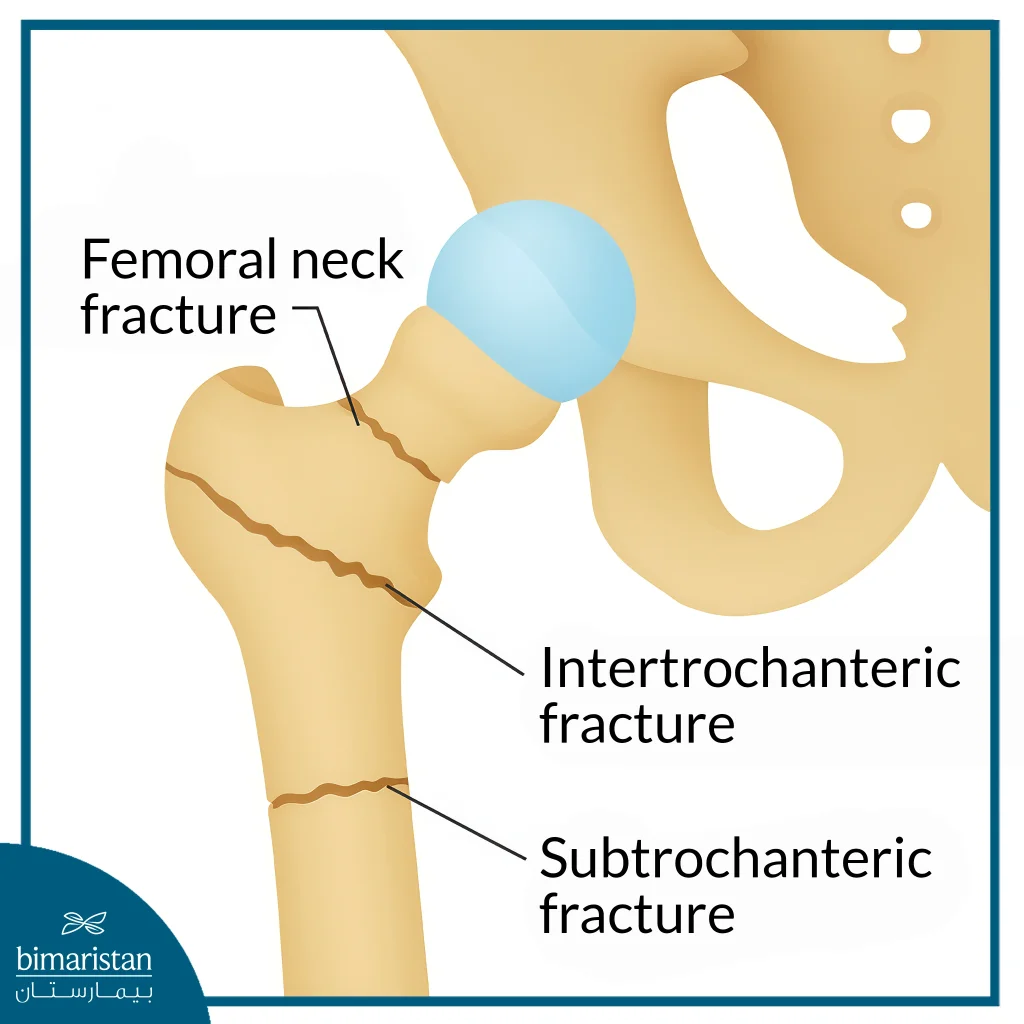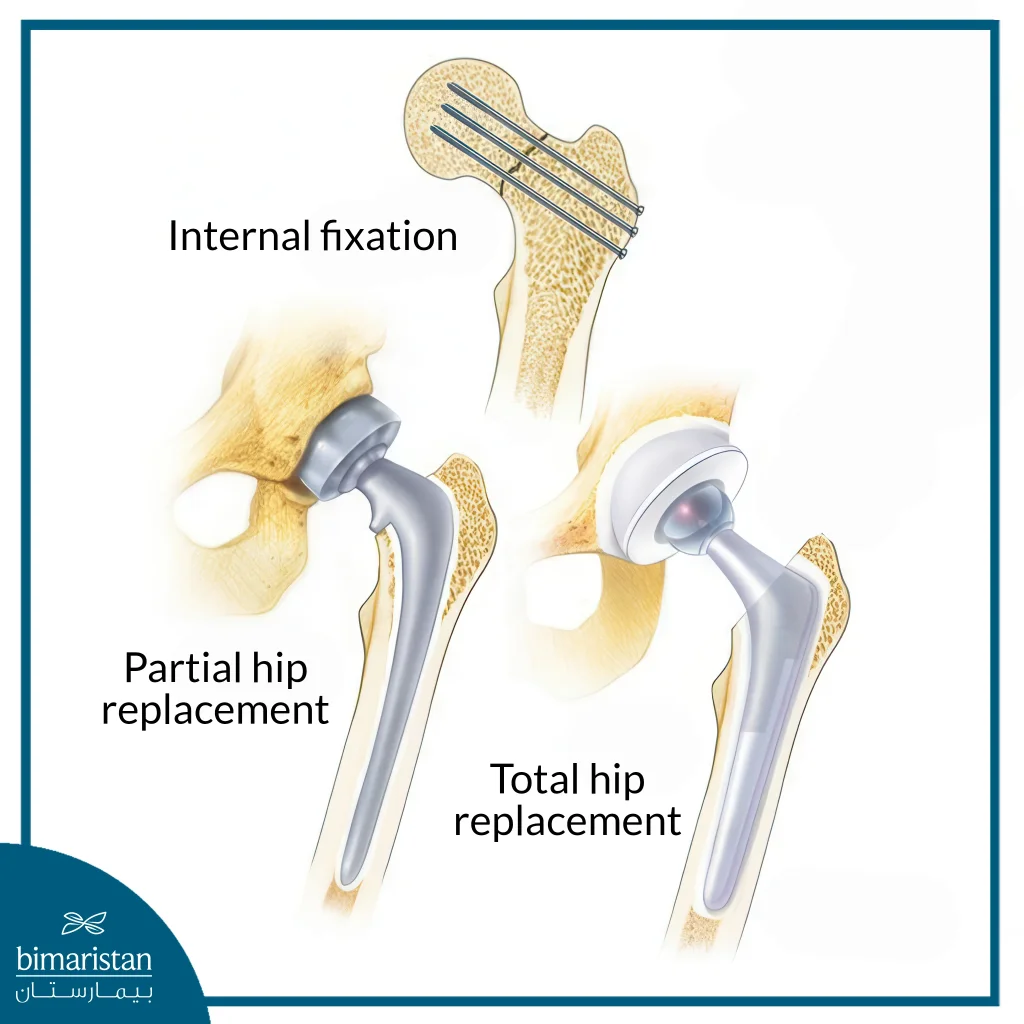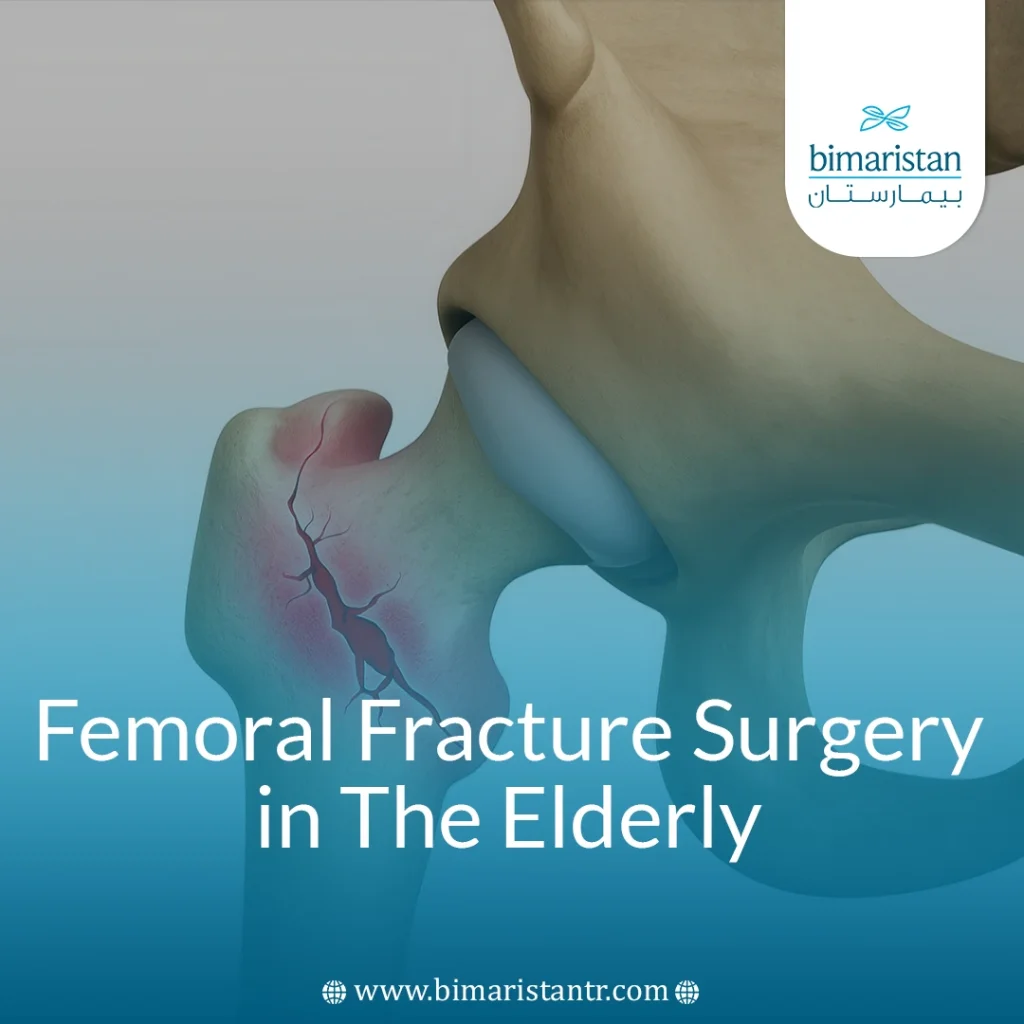A femoral fracture is a common and serious injury in the elderly, and often requires rapid femoral fracture surgery in the elderly to minimize complications and improve the chances of recovery. In this article, we shed light on the causes of femoral fracture in the elderly, when femoral fracture surgery in the elderly is necessary, and how to manage the post-operative phase.
Causes of femoral fracture in the elderly
A femoral fracture often requires severe trauma, with the most common causes being falls from a standing position, car accidents, or a sports injury, but there are other causes and risk factors that increase the likelihood of a femoral fracture in older adults, such as:
- Osteoporosis: As you age, your bones become weaker and more prone to fracture.
- Thyroid issues: Hyperthyroidism leads to osteoporosis.
- Impaired balance or vision: Due to diseases such as diabetes, Parkinson‘s, and peripheral neuropathy, low blood sugar or blood pressure may contribute to this risk.
- Intestinal disorders: Conditions that reduce the absorption of vitamin D and calcium can lead to osteoporosis.
- Some medications: Such as cortisone, which weakens bones when used for long periods of time, as well as some medications that cause dizziness such as sleep medications, antipsychotics, and tranquilizers.
Types of femoral fractures common in the elderly
There are several types of femoral fracture surgery in the elderly, depending on the location of the fracture, and these fractures vary in severity and prevalence.
Femoral neck fracture
Femoral neck fractures are one of the most common injuries in the elderly, and are often the result of a simple accident such as tripping on the sidewalk, and osteoporosis increases the risk of this fracture, and causes sharp and stabbing pain in the hip immediately after a fall, and in some cases there is no complete splitting of the bone, as the strong muscles in the thigh keep the broken bone fragments together, and for the elderly this fracture is dangerous and associated with a high risk of complications during the recovery period, and mobility and independence are often significantly reduced after the injury.
Intertrochanteric Fracture
If a fracture occurs between the two bony prominences at the top of the femur, it is called an intertrochanteric fracture, which accounts for half of all femur fractures, and often occurs in the elderly after a fall while standing.
Subtrochanteric Fracture
A fracture located between the lesser trochanter and the area 5 cm below it, it is one of the least common fractures in the elderly, often caused by a fall, especially in the presence of osteoporosis.

When do femoral fractures need surgery?
Sometimes a femur fracture is treated with a splint that covers the entire leg and extends to the hip, as a temporary measure to relieve pain and stabilize the broken bone, and bone traction may be used as a treatment option, where a tape is fixed around the ankle and weights are attached to a frame and pulley to exert gentle pressure on the femur, but most cases are treated with femur fracture surgery in the elderly, due to the following conditions:
- A fracture cannot be healed with conservative treatment due to poor healing in the elderly
- Damage to the blood supply to the femoral head due to blood vessel injury
- Severe pain or loss of mobility
Types of femoral fracture surgery in the elderly
There are several types of femoral fracture surgery in the elderly, and the criteria for choosing the type of surgery vary depending on the patient’s age, type of fracture, and general condition.
Fixing the fracture with plates and screws
Known as Open Reduction and Internal Fixation (ORIF), the surgeon inserts screws, pins, plates, or a metal rod into the femur to hold the bone fragments in place during the healing process. Some people live with these stabilizers inside their bodies for life, while others need to have them removed after the fracture has healed.
Partial or total hip replacement
Older people often require a total hip replacement or partial hip replacement after a fracture, where the doctor removes the femoral head and hip socket and replaces them with an artificial joint made of metal. In most cases, hip replacement is the best solution.

Preparing for femoral fracture surgery in the elderly
Before performing femoral fracture surgery in the elderly, some tests and preparations must be made to ensure the patient’s safety and protect them from complications. Here are some of the tests:
- Assessment of cardiac and respiratory status: An electrocardiogram (ECG) and blood tests are performed to assess cardiac status, a clinical assessment of respiratory function is performed, and a chest x-ray or lung function tests may be ordered if the patient has chronic diseases such as chronic obstructive pulmonary disease (COPD).
- Control of chronic diseases: Better control of chronic diseases before surgery reduces the risk of complications.
- Discuss the risks of anesthesia and surgery with the medical team: The medical team jointly assesses the risks of anesthesia depending on the health condition and informs the patient and family of the potential risks, the surgical plan, and the length of recovery.
After femoral fracture surgery in the elderly
After femoral fracture surgery in the elderly, the patient usually stays in the hospital for a period of 4 to 7 days, depending on the patient’s health condition and the presence of complications and the extent of the patient’s ability to start walking after surgery, and the patient will start a physical therapy plan shortly after surgery, and the patient may need physical therapy for several months to restore the ability to move and walk, and the specialist will give the patient some strengthening exercises to strengthen the hip muscles, and improvements may last up to a year after surgery.
The patient may need to use a cane or walker during the recovery period, which may last for a long time.
Possible complications after femoral fracture surgery in the elderly
Any surgical procedure is not without complications and risks, and complications of femoral fracture surgery in the elderly include the following:
- Avascular necrosis: This is the death of the bone as a result of prolonged interruption of blood flow to the bone.
- Lack of healing: The bone may not heal completely or at all.
- Faulty healing: Occurs when the parts of a broken bone don’t line up properly during healing.
- Bone infection (osteomyelitis): If the fracture is open (the bone comes out of the skin), the risk of bacterial infection increases.
- Blood clots: After surgery, lack of movement can lead to the formation of a blood clot.
- Wound or joint infections: Bacteria can enter during or after surgery and cause an infection in the wound or joint if it is replaced.
- Reduced mobility or chronic pain: Some patients may have difficulty regaining full mobility or continue to have pain for a long time after surgery.
However, the medical team works to prevent the complications of femoral fracture surgery in the elderly by choosing the best surgical techniques for good bone fixation, ensuring good blood flow, using accurate fixation tools, following up with radiology, administering antibiotics before and after surgery, and strict sterilization in the operating room to ensure patient safety and prevent risks.
The importance of family support and psychological rehabilitation
Family support and psychological rehabilitation is an essential part of the recovery journey after femoral fracture surgery in the elderly, where the moral support of the patient by his family helps to raise the patient’s moral and psychological state and reduce feelings of isolation and frustration that may hinder recovery, and the patient should be encouraged to move early, which contributes to accelerating the recovery of the patient’s ability to move, in addition to that, long-term home care programs play an important role in providing physical therapy that enhances quality of life and reduces the possibility of relapse or the need for re-hospitalization.
Preventing future femoral fractures
While you may not always be able to prevent femoral fractures because they often occur as a result of sudden falls or unpredictable injuries, you can minimize your risk of falls or fractures by:
- Perform a bone density test and treat osteoporosis if present
- Make sure the home and workplace are free of clutter and obstacles that cause tripping
- A diet that helps keep bones healthy
- Practicing balance exercises
Femoral fracture surgery in the elderly is a life-saving procedure in many cases, but it requires an integrated treatment plan from diagnosis to surgery, rehabilitation, and psychological support, as early assessment and appropriate treatment decision-making are the key to a better recovery.
Sources:
- MedlinePlus. (n.d.). Hip fracture. U.S. National Library of Medicine. Retrieved July 9, 2025
- American Academy of Orthopaedic Surgeons. (n.d.). Hip fractures. Ortholnfo. Retrieved July 9, 2025



